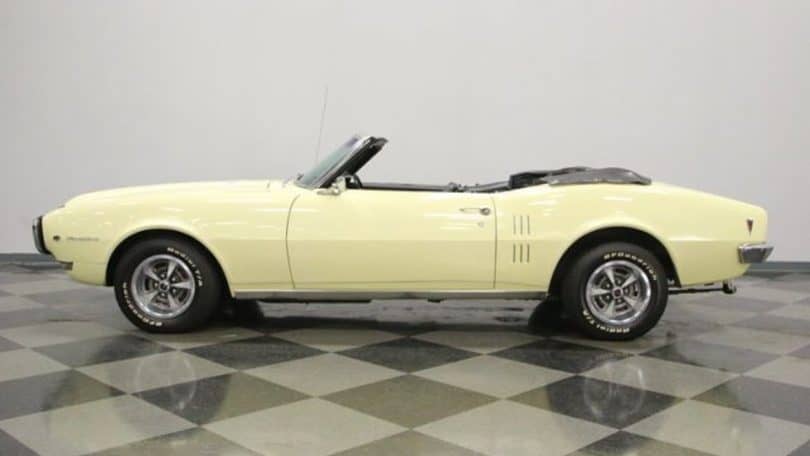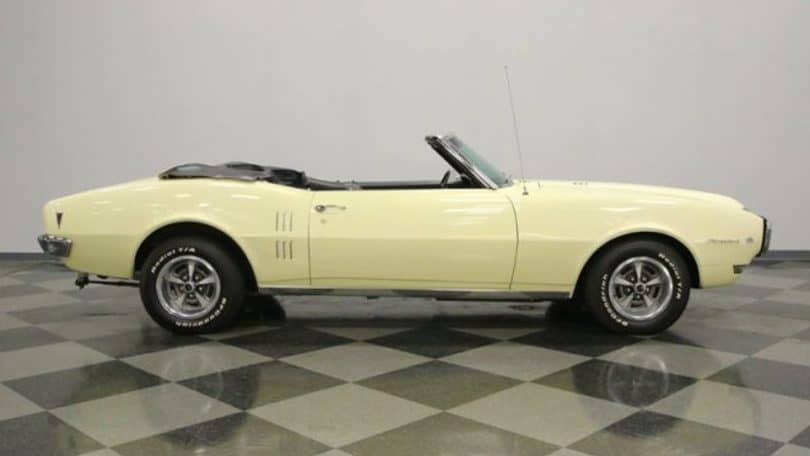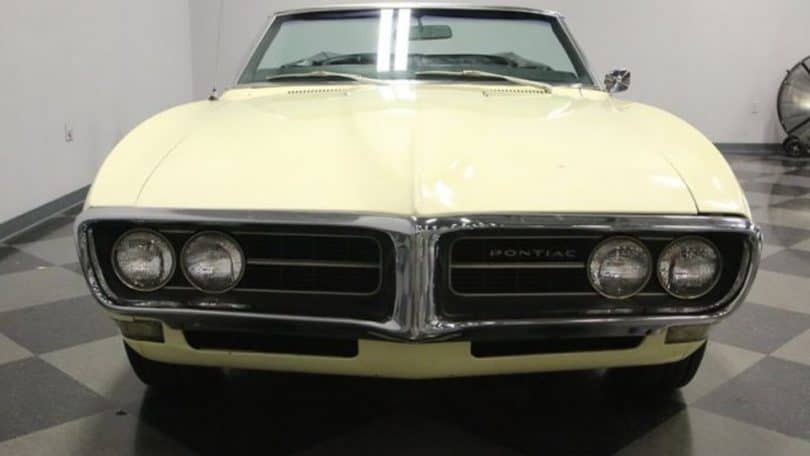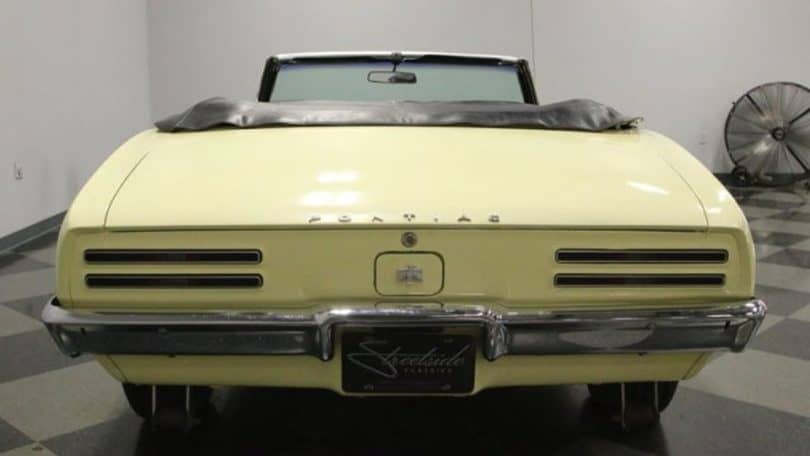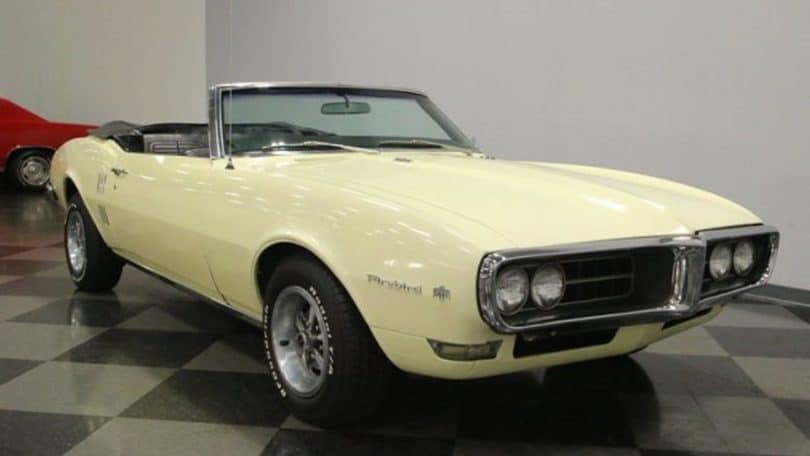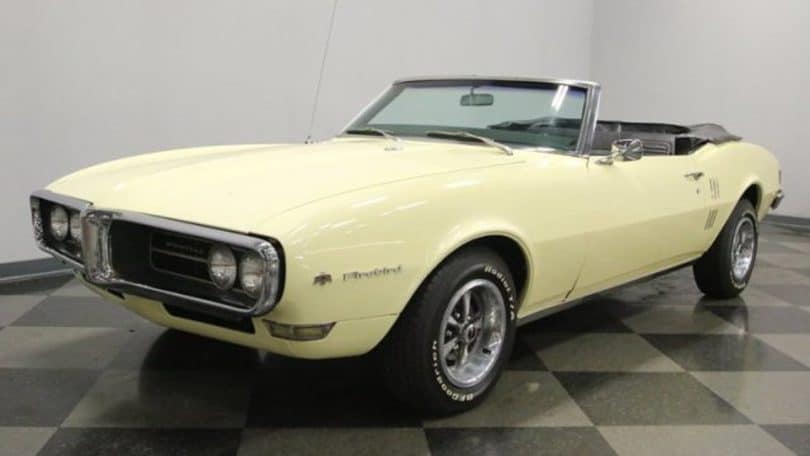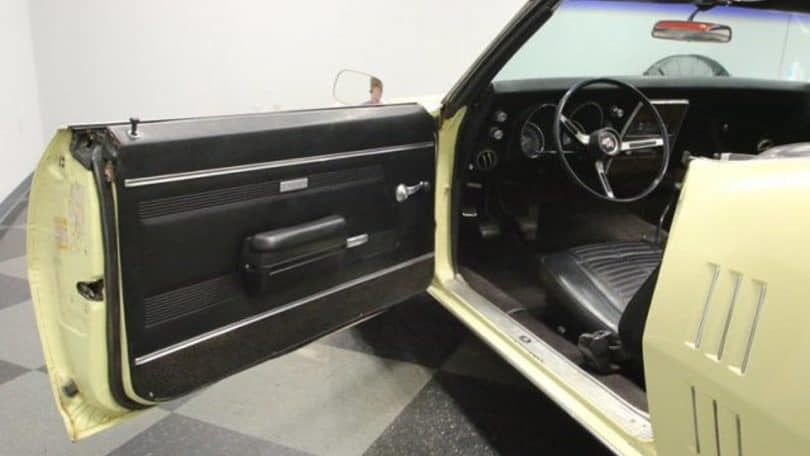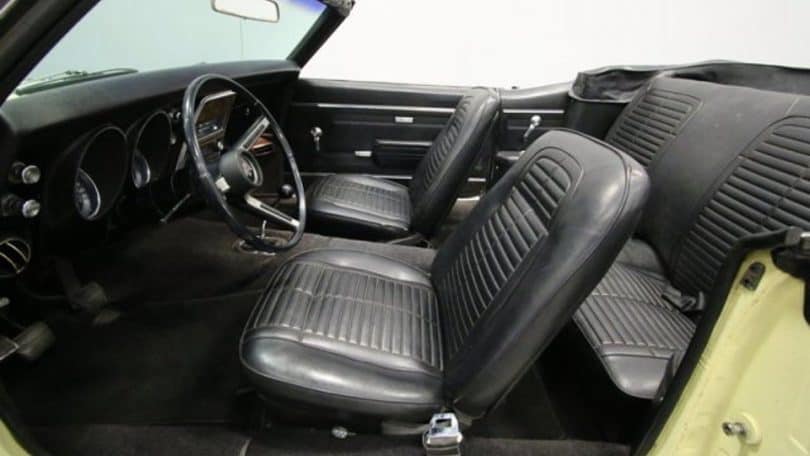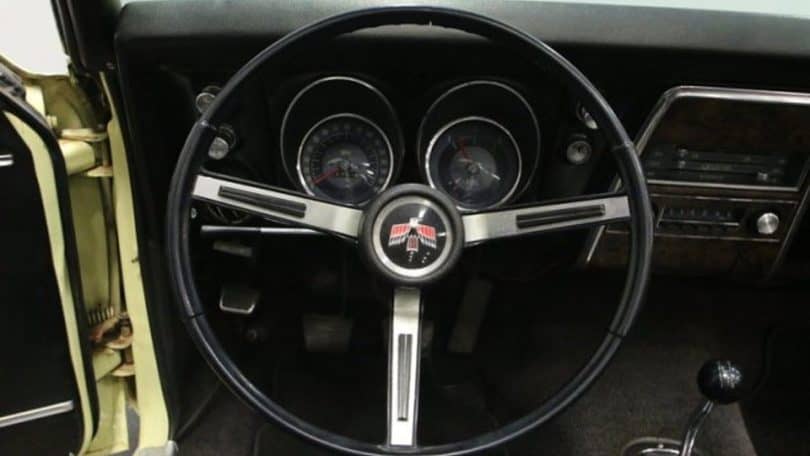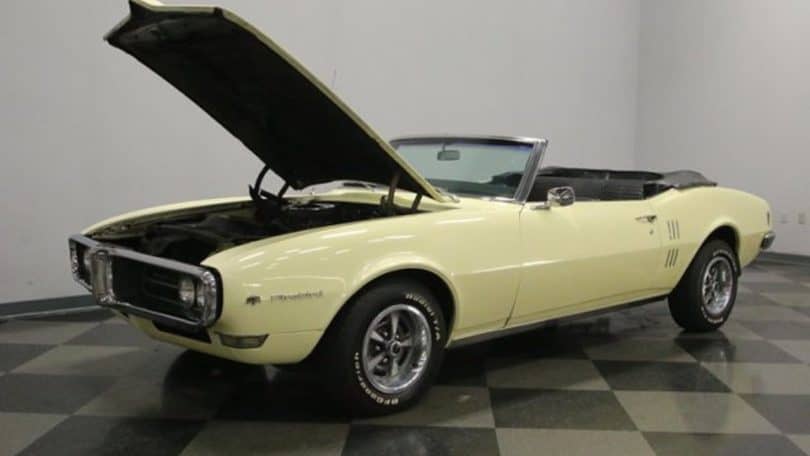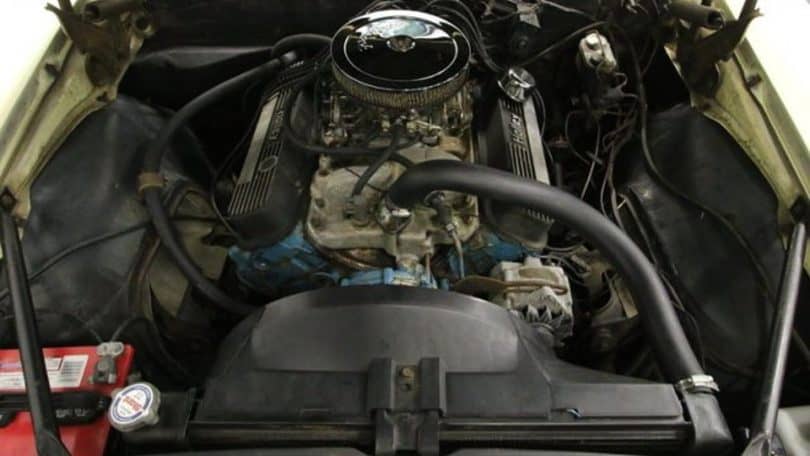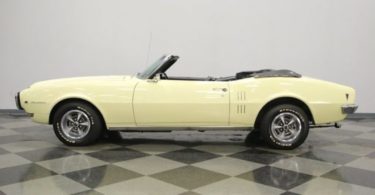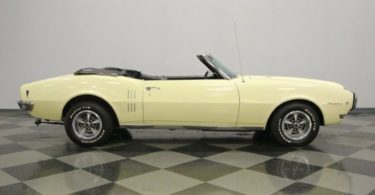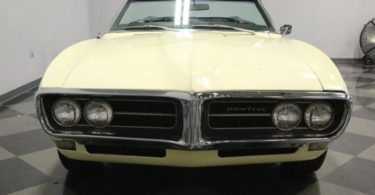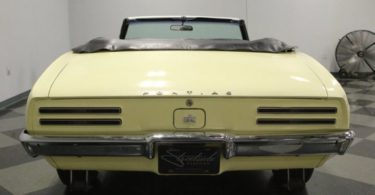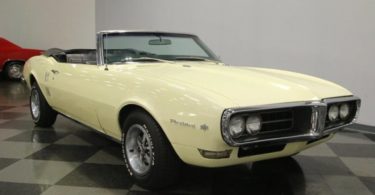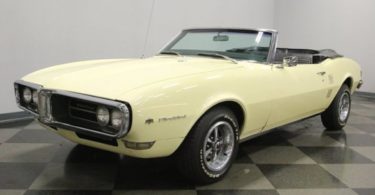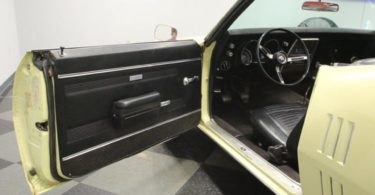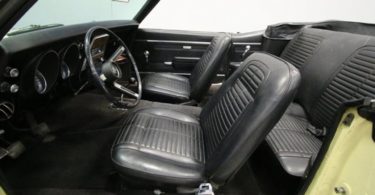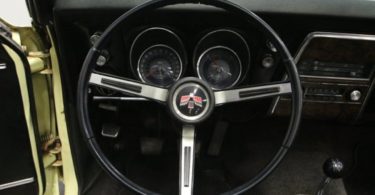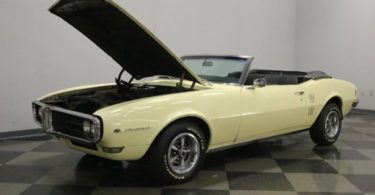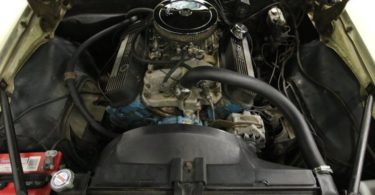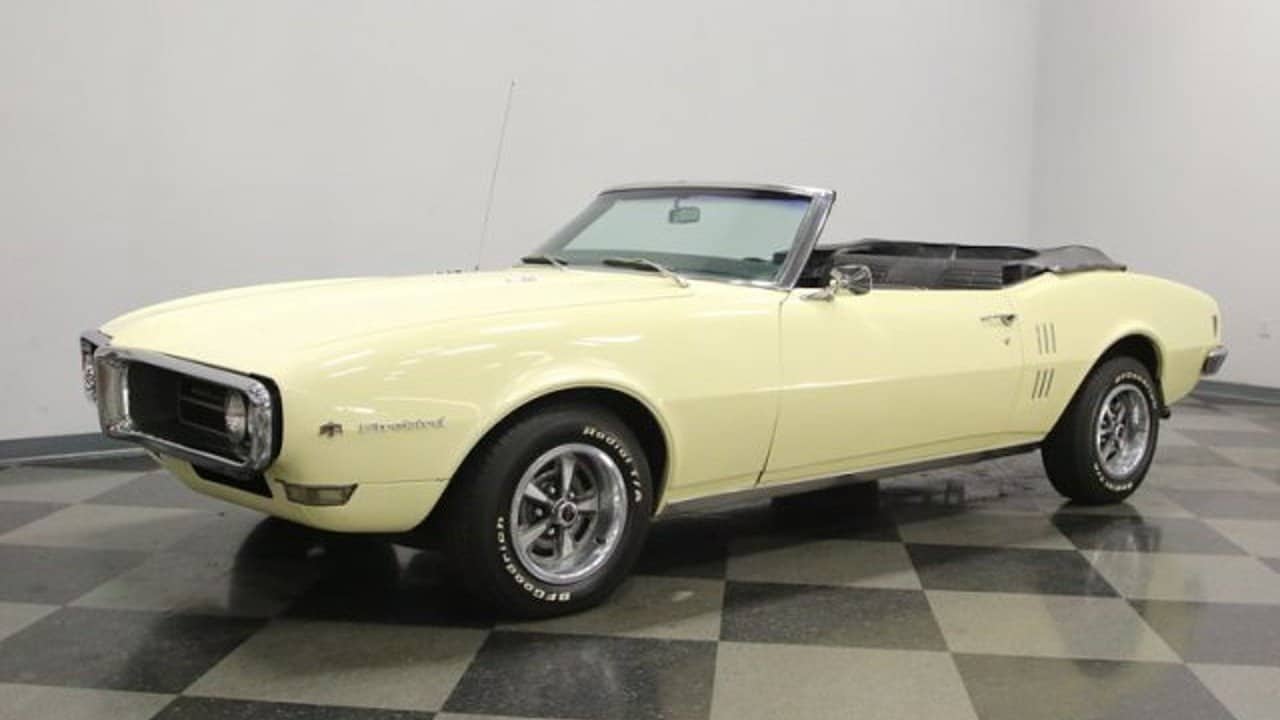
“The Magnificent Five/The Pontiac Firebirds” 1968 Firebird sales brochure
- New side marker lights were federally mandated by the government for all 1967 cars.
- Other styling changes were slight, but larger blinkers that extended past the front edges of the car distinguished the model.
- The side window vent was eliminated in favor of GM’s “Astro Ventilation.”
Muscle Car Specifications
After a successful, and relatively short, debut year, changes to the 1968 Firebird were very slight. And Pontiac’s “if it ain’t broke don’t fix it” strategy apparently worked, as production was up 29.74 percent over the previous year. Advertisements and sales brochures still touted the aforementioned “magnificent five,” which represented the five engine options available and their respective trims. Interior and exterior trim was modified slightly for all models.
Even though Pontiac marketed five Firebirds, only two official models existed, the hardtop and the convertible, though each version had a specific name that corresponded to its engine.
The base model was known as the Firebird OHC, and included a 250 CID overhead cam six-cylinder engine and produced 175 horsepower. This was an improvement over already respectable, for a six-cylinder at the time, 165 horsepower produced by the base model last year. The Firebird Sprint used a 4-barrel 250 CID engine that upped horsepower to 230.
Up next were the V8s, starting with the Firebird 350 that, appropriately, included a 2-barrel, 350 CID V8 rated at 255 horsepower. The Firebird 350 H.O. was a 4-barrel version of the same engine that produced 325 horsepower. Finally, the Firebird 400 actually had a choice of engines. All, of course, were 400 CID V8s, and the first produced 330 horsepower, while the 400 H.O. produced 335 horsepower and the Ram Air had a recalibrated the carburetor that increase fuel flow and produced 345 horsepower.
Hardtop
The base models came with standard features like all-vinyl bucket seats, a wood grain dash and 2-speed windshield wipers. After the base model, various versions with larger engines added features like a heavy-duty suspension, wide-oval tires, floor mounted shifters and dual exhaust.
To top it off, Firebird buyers could pick from a multitude of options to “customize” their car, including air conditioning, tinted glass, tilt steering wheel, power steering, power breaks, a vinyl roof and an AM/FM stereo.
The base model had an MSRP of $2,781, while various engines added anywhere between $116 to $351 to that price. Other options, of course, came on top of those prices.
For the 1968 model year, 107,112 Firebirds were produced, and that number represented a 29.74 percent improvement from the year before. Of those, 90,152 were hardtops.
Convertible
The base convertible started at $2,996, and 16,960 were built. While sales of the convertible models grew (by 9.22 percent), they were not growing nearly as fast as those of the hardtop.
Pony Car Competition
After Firebird, Camaro and the Mercury Cougar entered the pony car class in 1967, AMC got in on the action in ’68 by introducing the Javelin. The pony car class was hitting what would become its best years, and all cars were now introduced except the Dodge Challenger, which would come in 1970.
In 1968, the Mustang was still selling well and leading the pony car pack in the sales, but its sales were already in decline as a result of the new competition. The Firebird almost caught up to the Cougar in production numbers for 1968, and both were behind the Mustang and Camaro. Bringing up the rear in terms of sales numbers were the Javelin and the Plymouth Barracuda. Though the latter had been around since 1964, it was never able to escape the shadow of Mustang’s great sales numbers.
The pony cars were riding high in 1968 and would continue to do so for a couple of years, though the 1970s would soon bring rising insurance rates, more government regulation and less consumer interest in the class.
Engine Specifications
| Type | Size | Carb | Horse Power | Tourqe |
|---|---|---|---|---|
| L53 | 250ci | 1x2bbl | 215 hp @ 4800 rpm | 255 lb-ft @ 3800 rpm |
| I6 | 250ci | 1x1bbl | 175 hp @ 4800 rpm | 240 lb-ft @ 3800 rpm |
| L76 | 350ci | 1x4bbl | 320 hp @ 5100 rpm | 380 lb-ft @ 3200 rpm |
| L30 | 350ci | 1x2bbl | 265 hp @ 4600 rpm | 355 lb-ft @ 2800 rpm |
| L74 | 400ci | 1x4bbl | 335 hp @ 5300 rpm | 430 lb-ft @ 3400 rpm |
| Ram-Air | 400ci | 1x4bbl | 335 hp @ 5000 rpm | 430 lb-ft @ 3600 rpm |
| Whiskey 66 | 400ci | 1x4bbl | 330 hp @ 4800 rpm | 430 lb-ft @ 3300 rpm |
Performance Statistics
| 0 to 60 mph | Quarter Mile | Engine | Source |
|---|---|---|---|
| n/a | 13.8 sec @ 106.0 mph | 400ci/335hp | Hot Rod |
| n/a | 12.9 sec @ 109.5 mph | 400ci/340hp | MCR Feb/Mar 1996 |
| 7.6 sec | 15.4 sec @ 93.0 mph | 400ci/335hp | Motor Trend |
Love the Chrome and the Performance
I really like this car. It is not as popular as its Camaro cousin but it is every bit as good. The Firebird has always been a little heaver and a little more refined than the other pony cars. However, Pontiac never failed to give it a proper engine and because of this the Firebird and especially the Trans-Am always performed well.

